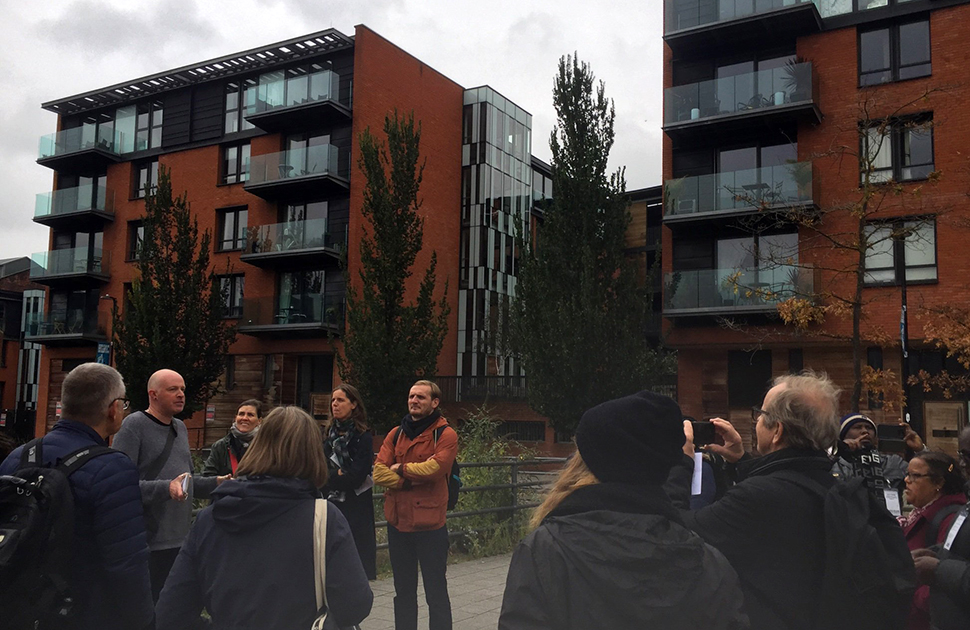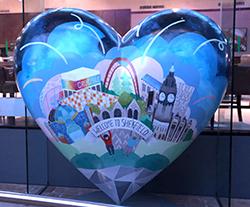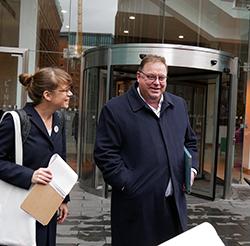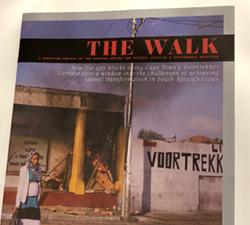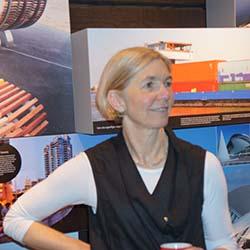Kelham Island, and its adjoining area of Neepsend, is probably best known to Sheffielders for two things - its museum and its beer. Kelham Island Museum was opened by Sheffield City Council in 1982 at a time when the city's traditional steel industry was in sharp decline and now plays a key role in Sheffield’s heritage and culture scene. The Kelham Island Brewery, formed in the backyard of the Fat Cat pub in 1990, kickstarted Kelham Island’s position at the heart of the city's - and Britain's - real ale revival. The brewery still exists and has now been joined by numerous other breweries and real ale pubs in the area.
It was these two developments, along with a combination of planners, architects and visionaries who saw the potential in Kelham Island, that eventually led to the area winning the Great Neighbourhood category at the 2019 Urbanism Awards.
The walk I led as part of the Mistra Urban Futures Annual Conference showcased the industrial heritage of the area whilst also considering how it has changed and its current challenges. The origins of Kelham Island stretch back to the 1180s when an artificial watercourse (or goit in the dialect of Northern England) was dug through fields and market gardens by the River Don to power a nearby mill. It was the resultant island, sandwiched between the river and the goit, which later acquired the name Kelham Island after a local millowner Kellam Homer. The growing metalworking industry that made Sheffield a world-famous industrial powerhouse expanded and by the mid-1800s the area was a rabbit warren of terraced streets sandwiched between noisy and polluting factories. These factories grew, and by the 1930s the last of the houses had been demolished in slum clearance with industry covering the whole area. In the end a mixture of overseas competition and industrial policy and general economic decline led to Kelham Island’s own decline and by the 1970s and 80s it was a rundown area best known as the city’s red-light district.
Stoves, fenders and decorative ironwork
The walk took participants around the area’s industrial architecture that is the core of the new Kelham Island. Starting by the goit that still forms a focal point in the area, the first calling point was the clock tower and archway that was built as a grand entrance to Henry Hoole's Green Lane Works. In its heyday it manufactured stoves, fenders and other decorative ironwork, but now forms an entrance to Citu’s Little Kelham development. This development of modern family homes, as well as apartments and restaurants, is built to high environmental standards and reflects the design of local industrial buildings. A further highlight of the walk was James Dixon & Son's substantial Cornish Place works that once made a range of household wares of such high quality that in the 1890s it was visited by the Shah of Persia and later produced the trophy for the US Masters golf tournament. In the 1990s, Cornish Place became one of the first conversions of an industrial building to residential and is still a popular place to live today.
Supporter of women’s suffrage and press freedom
The walk also showed that the history and importance of Kelham Island is more than just its architecture. Also highlighted was one of the areas heroes Mary Anne Rawson, an anti-slavery campaigner and supporter of women’s suffrage and press freedom, who was born in a house now occupied by Brooklyn Works another factory that became an early residential development. The walk also covered the campaign to improve working and living conditions, including the dramatic events of the Sheffield Outrages of the 1860s where machinery in Globe Works, now a small business centre, was sabotaged, and explosives were thrown at a local house.
The area Neepsend business and industrial feel
The area of Neepsend, across the river is also very much a part of the same community as Kelham Island, but has retained much more of its business and industrial feel and that also received attention on the tour. Neepsend includes some of the cultural venues that helped kickstart the area’s regeneration such as the Kelham Island Arts Collective and Yellow Arch Studios where the Arctic Monkeys recorded some of their early songs.
Increasing rents makes it harder for businesses and families to remain in the area
Rather than a sanitised view of the area, the walk addressed some of the area’s current challenges. The local neighbourhood group - Kelham Island and Neepsend Community Alliance – is pushing the development of a neighbourhood plan which aims to reflect the aspirations of of the community in future planning decisions through a process with real legal standing. Amongst the area’s challenges is the tendency for developers to prioritise small apartments making it impossible for families to move to and remain in the area, traffic congestion and a lack of parking, and increasing rents and land values that make it harder for small businesses to get off the ground and for existing artists and artisans to afford to stay. There is also a real desire to expand local services, such as doctors, open space and shops, that will create the variety that is vital for a viable and sustainable community.
The walk, with participants from Africa, UK and other parts of Europe, was an insight in to an area with a great history, it reflected on its revitalisation and looked forward optimistically to a successful future.
/ By Anders Hanson
Photo: Alex Payling
